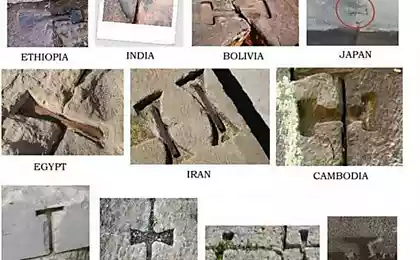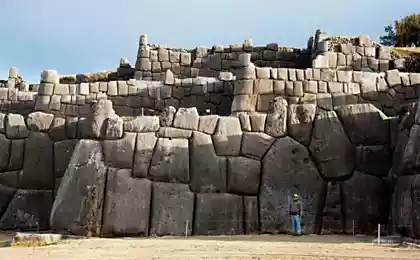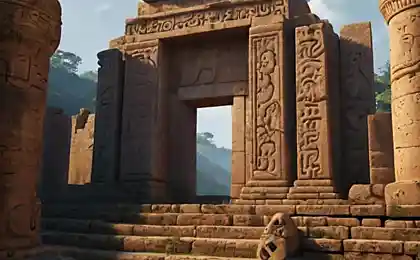1134
The oldest buildings in the world.
Will be 20 photos.
Dolmen Bagno
Dolmen Bagno dates back to the megalithic period, and can be found in Saumur, France. As one of the largest dolmens in the country and in Europe, this majestic monument was made using sandstone and measured 23 meters in length. Dolmen is composed of the inner chamber and the entrance, which suffered some damage. Even though the landmark is located on private property, it can be absolutely free to attend. Estimated time of its construction is considered 3,000 years BC.
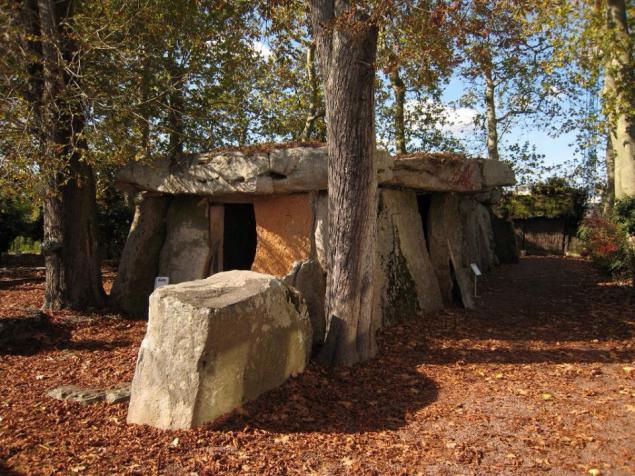
Tarxien temples (3100 BC)
Tarxien Temples Archaeological Park is located in the village of Tarxien in Malta. Dating back to 3150 BC, the temple officially became UNESCO World Heritage Site in 1980. The site includes 3 temples that have incredible decorations depicting animals and spiral patterns. At the time, as archaeologists began to dig the place they learned that the Tarxien Temples, probably used for a variety of rituals, including animal sacrifice.
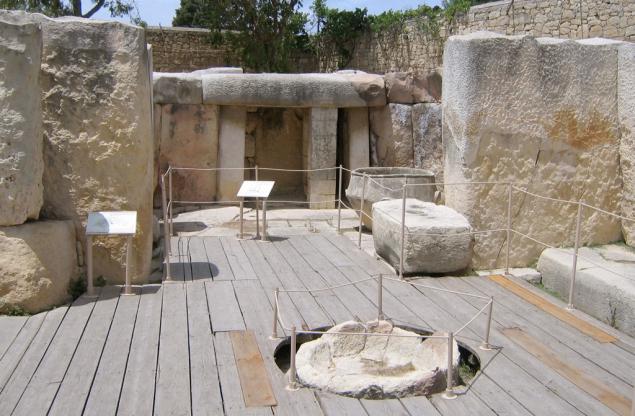
Newgrange (3100 BC)
Prehistoric monument called Newgrange can be found in the Irish county of Meath, in the vicinity of the River Boyne. Built during the Neolithic period, about 3200 BC, this is preceded by a big round mound of Stonehenge. The purpose of the construction - is still a mystery to this day, but many archaeologists agree that Newgrange was used for religious purposes. Moreover, the rising sun light flooding his room during the winter solstice. Nowadays, the place - a very important tourist attraction and one of the most significant national monuments of the country.
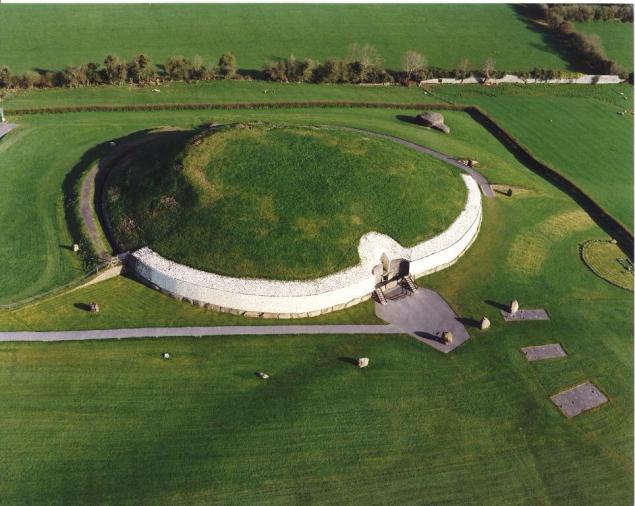
Tomb of the Eagles (3150 BC)
Neolithic, chambered tomb, called Tomb of the Eagles can be found in Orkney, Scotland. What makes this building so incredible - it's 725 bones of birds and 16 000 human bones, which are then stored. The name of the grave was chosen because many bird bones belonged sea eagles with white tail, who died in thousands of years later, after the landmark was built. The first person who explores the Tomb of the Eagles, was Ronald Simison, while archaeologist named John Hedges carried out a much deeper analysis of the place, which was built in 3150 BC
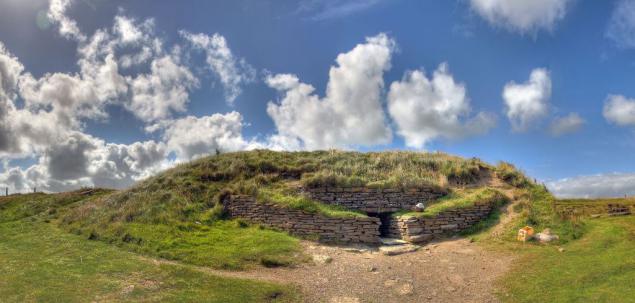
Skara Brae (3180 BC)
Skara Brae is located on the Gulf of Skayl in Scotland, and it is now - one of the most famous Neolithic structures in the country. Skara Brae contains 8 stone buildings, formed the most amazing way. This attraction will eventually become a UNESCO World Heritage Site. In fact, the place is very well kept, and is referred to as the "Scottish Pompeii".
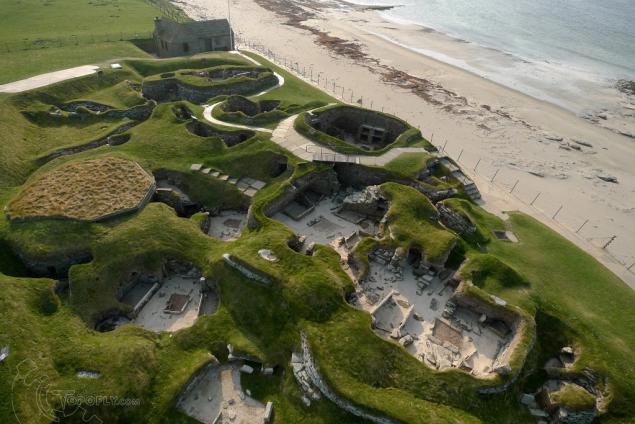
Kvonterness (3250 BC)
Kvonterness - the grave, which can be found on a hillside in Scotland Vaydford. When the site was excavated during the 1970s, archaeologists discovered the remains of about 157 people, of whom 10 were infants, 26 children, 85 adults and 36 adolescents. Other discoveries included animal bones, as well as certain artifacts and tools. Nowadays the place is closed to the public in order to preserve and to ensure that it could be studied further in the future.
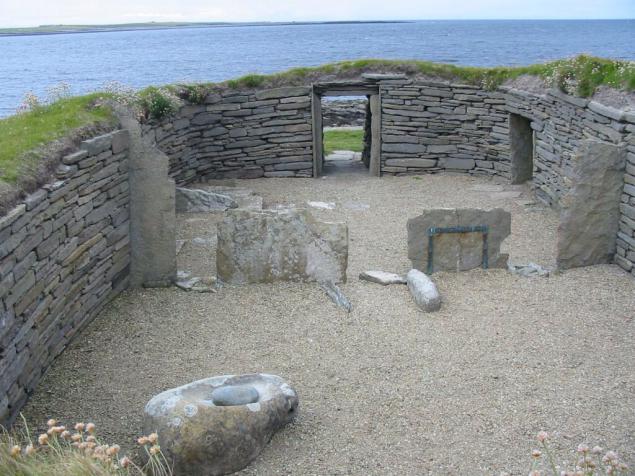
Yarso Hill (3350 BC)
Yarso Hill is located in the vicinity of the village Rusey in Scotland, and dates back to 3350 BC This prominent landmarks include the Chamber, which was divided into 4 sections, and can be reached through the passage 4 meters long. Excavations in 1934 revealed the remains of about 29 people, as well as several knives of flint and pottery items. The decorations on the masonry include numerous triangular patterns. Hill Yarso - structure, which dates back to 3350 BC.
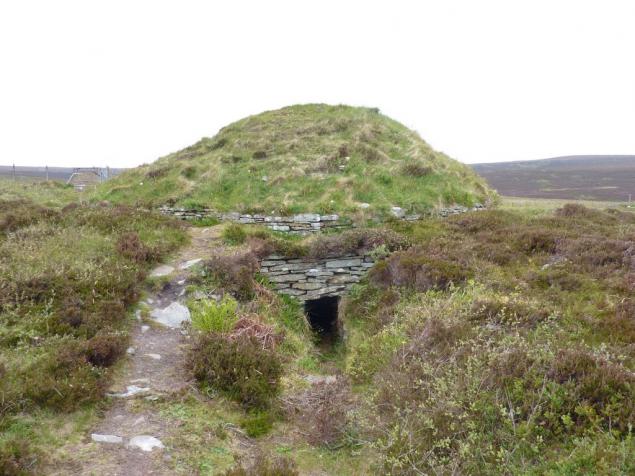
Anstenskaya camera (3450 BC)
Immersed even further into the past, we disclose Anstenskuyu chambered cairn of the Neolithic period, which can be found in Orkney, Scotland. This perfectly preserved tomb of a bit unusual, as it shows a round mound, divided internally at the camera. Excavations in 1884 revealed a unique type of pottery that has been created using a special technique. Pottery included round bowls, some of which were decorated with stones on the rim.
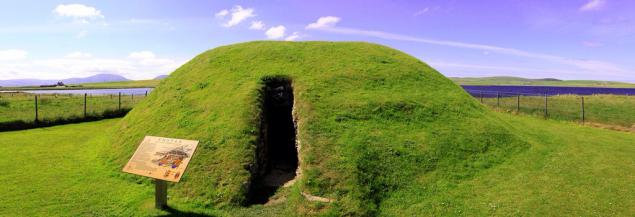
Ueylendz-Smythe (3460 BC)
Tomb Ueylendz-Smythe is located in Oxfordshire, England. This incredible Neolithic tomb in the form of a long hill - one of the many old places that are associated with the German blacksmith-god named Weiland. This ancient place is covered with myths and legends, which explain why many visitors leave here some donations, such as fruits, flowers or different objects.
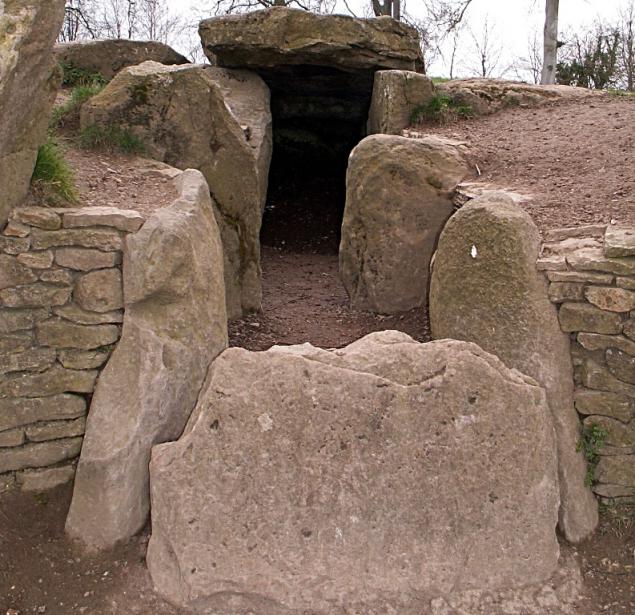
Gavrinis (3500 BC)
Gavrinis Island is located in the Gulf of Morbihan in Brittany, France, and includes megalithic monument called the Tomb Gavrinisa. The island is uninhabited and can be reached by boat from the nearby town of Larmor-Baden, but archaeologists agree that he was actually connected to the mainland in 3500 BC, when the tomb was built. In addition it is perfectly preserved tomb near beautiful impression, megalithic decorations.

Barrow Midhowe Chambered Cairn (3500 BC)
Also dating back to 3500 BC, the Neolithic chambered burial mound of stones called Midhowe Chambered Cairn, located on the island Rusey in Orkney, Scotland. Cairn gets its name from the magnificent Bronze Age Broch, which can be found in the western part of the complex. The remains of about 25 people were found in the walls of the grave, as well as animal bones. According to its large size it can be judged that the pyramid Midhowe Chambered Cairn was important for her glory days.
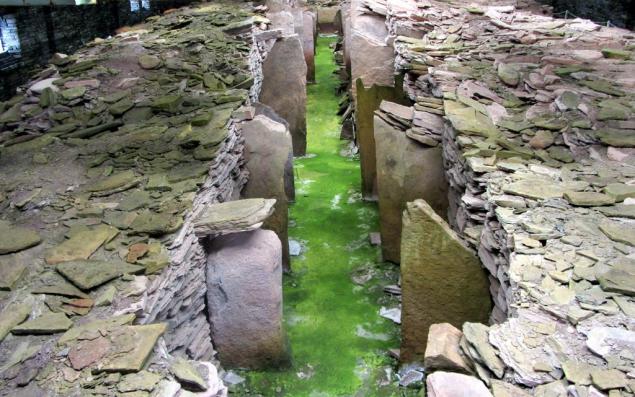
La Hogue Bai (3500 BC)
District Gruvill Jersey in the UK is home to the historic site of La Hogue Bai, which was printed on the banknote 2010 one pound advantage. This is an incredible site was first excavated in 1925, but then the opening was somewhat limited. La Hogue Bai ward includes a passage 20 meters long, and the earth mound 15 meters high. Two medieval chapels were built on the mound - one dated back to the 12th century, while the other was built in the 16th century.

Sechin Bajo (3500 BC)
The only non-European in our list - Sechin Bajo, which is a very old stone area in Lima, Peru. The site was excavated in 2008 by German and Peruvian archaeologists. Since it is approximately 500 years older than the ancient city of Caral, Sechin Bajo - probably the oldest archaeological site in the New World.
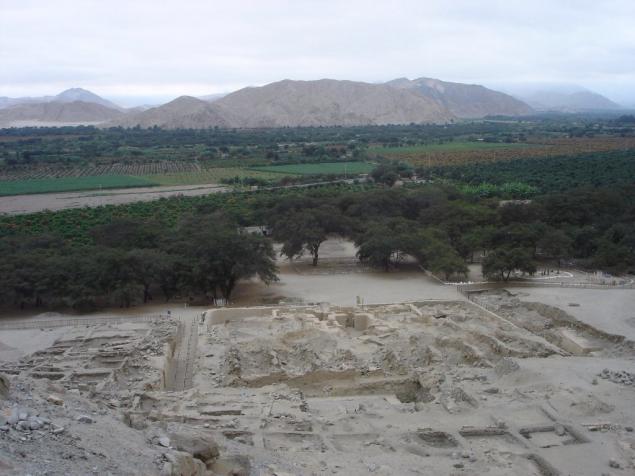
Listogil (3550 BC)
Listogil located in County Sligo, Ireland, and is the largest and most important monument in the group of prehistoric graves called Kerroumor. At 164 feet above sea level, Listogil is undoubtedly the highest in the sector, but also differentiates itself from its neighboring satellites due to its impressive size (111 feet in diameter). The central room of the monument can be achieved through an artificial passage, consisting of several gabions.
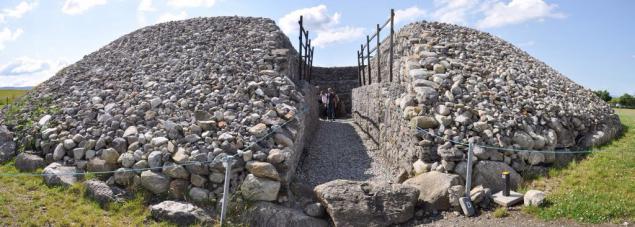
West Kennet Long Barrow (3650 BC)
Neolithic hill called West Kennet Long Barrow is located in close proximity to Silbury Hill in Wiltshire, England. The construction process began in the landmark 3600 BC, which means that it precedes Stonehenge by 400 years. Even though the place has suffered some damage due to the negligence of excavations, the experts really managed to find the remains of 46 people, both young and older people. Renowned archaeologist by the name of Ernest Stuart Piggott suggested that the place was used for religious and ritualistic purposes before acting as a burial place.

Ggantija (3700 BC)
Ggantija - a complex of temples that is located on the Island of Gozo. Churches that form this wonderful complex, among the first in Malta, which means that they are definitely older than the famous pyramids of Egypt. As the second oldest religious buildings built by people after Gobekli Tepe, this fantastic structure is more than 5,500 years. Historians and archaeologists suspect that the complex of temples of Ggantija is associated with the cult of abundance, especially since several statues and statuettes were found in the area. Ggantija - UNESCO World Heritage Site.
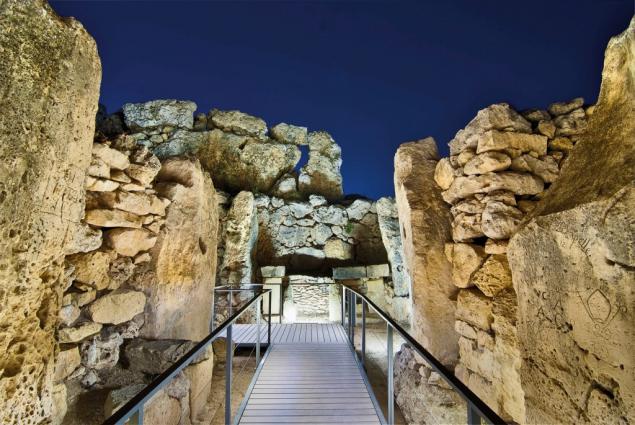
Knap of Howar (3700 BC)
The oldest and best-preserved stone house in Northern Europe can be found in Scotland, Knap of Howar. The site includes two neighboring buildings, which are allocated by massive walls and low inputs, which go directly to the sea. Buildings associated passage, but one of them is definitely bigger and older and, it seems, was used as a second home, or as a kind of workspace. Since they both have holes in their roofs, houses were probably podogrevaemy and lit the fire.

Saint-Michel tumulus (4500 BC)
Megalithic tumulus called Mount Saint Michel has a length of 410 feet, a width of 196 feet and a height of 32 feet. This village is very mound dates back to 4500 BC and can be found in Brittany, France, in the east of the commune of Carnac. Many artifacts that were uncovered during the excavation places are now exhibited in the Museum of Carnac. Even though visits to the inner chamber of the mound was possible during the 1980s, the room is now sealed and closed to visitors.
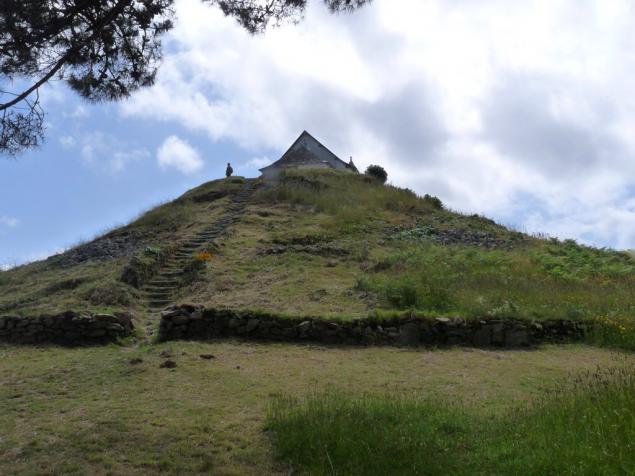
Tumulus of bougon (4700 BC)
Also known as Cemetery Bugon, tumulus of bougon Neolithic consists of five hills, which can be found in the Poitou-Charentes, France. The complex was discovered in 1840 and caused a lot of interest among the scientific community, but this place was not fully excavated until the 1960s. Most of the material found during the excavations, can be found at the Museum of Bugona.
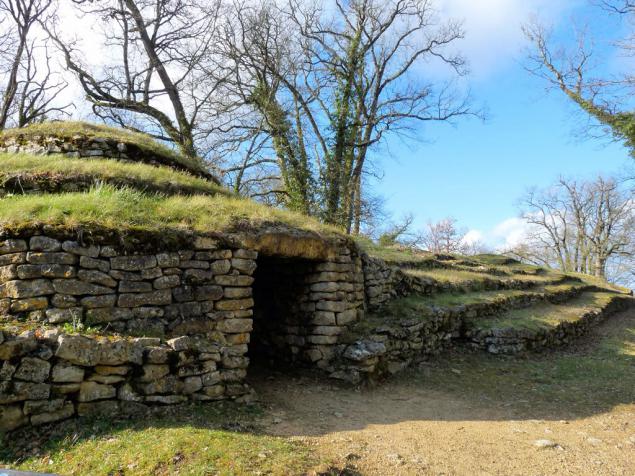
Barrow Cairn (4850 BC)
Finally, the oldest belonging to the megalithic monument in the world - Barrow Cairn, which is located in Finistère, Brittany, France. Dating back to the early days of the Neolithic period, this extraordinary landmark is an impressive collection of megalithic art, as well as the 11 wards. Built with about 13, 000 tons of stone, the monument was built in two phases, one to 4500 BC, and one between 4200 and 3900 BC The place was privately owned until 1950, when the local community has decided to request the opening of some of its wards for public access.
Posted in [mergetime] 1392276207 [/ mergetime]
I have all
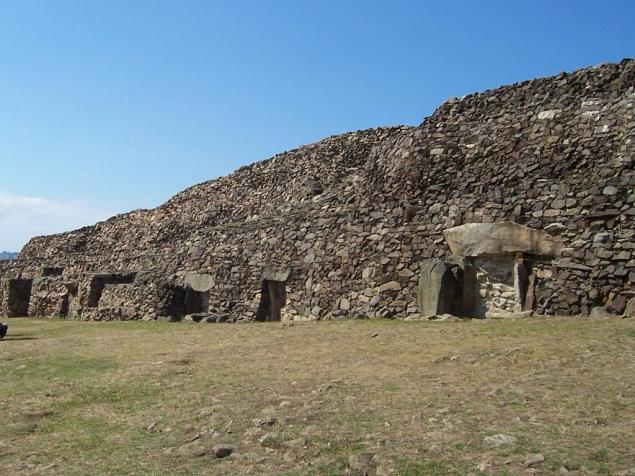
Source:
Dolmen Bagno
Dolmen Bagno dates back to the megalithic period, and can be found in Saumur, France. As one of the largest dolmens in the country and in Europe, this majestic monument was made using sandstone and measured 23 meters in length. Dolmen is composed of the inner chamber and the entrance, which suffered some damage. Even though the landmark is located on private property, it can be absolutely free to attend. Estimated time of its construction is considered 3,000 years BC.

Tarxien temples (3100 BC)
Tarxien Temples Archaeological Park is located in the village of Tarxien in Malta. Dating back to 3150 BC, the temple officially became UNESCO World Heritage Site in 1980. The site includes 3 temples that have incredible decorations depicting animals and spiral patterns. At the time, as archaeologists began to dig the place they learned that the Tarxien Temples, probably used for a variety of rituals, including animal sacrifice.

Newgrange (3100 BC)
Prehistoric monument called Newgrange can be found in the Irish county of Meath, in the vicinity of the River Boyne. Built during the Neolithic period, about 3200 BC, this is preceded by a big round mound of Stonehenge. The purpose of the construction - is still a mystery to this day, but many archaeologists agree that Newgrange was used for religious purposes. Moreover, the rising sun light flooding his room during the winter solstice. Nowadays, the place - a very important tourist attraction and one of the most significant national monuments of the country.

Tomb of the Eagles (3150 BC)
Neolithic, chambered tomb, called Tomb of the Eagles can be found in Orkney, Scotland. What makes this building so incredible - it's 725 bones of birds and 16 000 human bones, which are then stored. The name of the grave was chosen because many bird bones belonged sea eagles with white tail, who died in thousands of years later, after the landmark was built. The first person who explores the Tomb of the Eagles, was Ronald Simison, while archaeologist named John Hedges carried out a much deeper analysis of the place, which was built in 3150 BC

Skara Brae (3180 BC)
Skara Brae is located on the Gulf of Skayl in Scotland, and it is now - one of the most famous Neolithic structures in the country. Skara Brae contains 8 stone buildings, formed the most amazing way. This attraction will eventually become a UNESCO World Heritage Site. In fact, the place is very well kept, and is referred to as the "Scottish Pompeii".

Kvonterness (3250 BC)
Kvonterness - the grave, which can be found on a hillside in Scotland Vaydford. When the site was excavated during the 1970s, archaeologists discovered the remains of about 157 people, of whom 10 were infants, 26 children, 85 adults and 36 adolescents. Other discoveries included animal bones, as well as certain artifacts and tools. Nowadays the place is closed to the public in order to preserve and to ensure that it could be studied further in the future.

Yarso Hill (3350 BC)
Yarso Hill is located in the vicinity of the village Rusey in Scotland, and dates back to 3350 BC This prominent landmarks include the Chamber, which was divided into 4 sections, and can be reached through the passage 4 meters long. Excavations in 1934 revealed the remains of about 29 people, as well as several knives of flint and pottery items. The decorations on the masonry include numerous triangular patterns. Hill Yarso - structure, which dates back to 3350 BC.

Anstenskaya camera (3450 BC)
Immersed even further into the past, we disclose Anstenskuyu chambered cairn of the Neolithic period, which can be found in Orkney, Scotland. This perfectly preserved tomb of a bit unusual, as it shows a round mound, divided internally at the camera. Excavations in 1884 revealed a unique type of pottery that has been created using a special technique. Pottery included round bowls, some of which were decorated with stones on the rim.

Ueylendz-Smythe (3460 BC)
Tomb Ueylendz-Smythe is located in Oxfordshire, England. This incredible Neolithic tomb in the form of a long hill - one of the many old places that are associated with the German blacksmith-god named Weiland. This ancient place is covered with myths and legends, which explain why many visitors leave here some donations, such as fruits, flowers or different objects.

Gavrinis (3500 BC)
Gavrinis Island is located in the Gulf of Morbihan in Brittany, France, and includes megalithic monument called the Tomb Gavrinisa. The island is uninhabited and can be reached by boat from the nearby town of Larmor-Baden, but archaeologists agree that he was actually connected to the mainland in 3500 BC, when the tomb was built. In addition it is perfectly preserved tomb near beautiful impression, megalithic decorations.

Barrow Midhowe Chambered Cairn (3500 BC)
Also dating back to 3500 BC, the Neolithic chambered burial mound of stones called Midhowe Chambered Cairn, located on the island Rusey in Orkney, Scotland. Cairn gets its name from the magnificent Bronze Age Broch, which can be found in the western part of the complex. The remains of about 25 people were found in the walls of the grave, as well as animal bones. According to its large size it can be judged that the pyramid Midhowe Chambered Cairn was important for her glory days.

La Hogue Bai (3500 BC)
District Gruvill Jersey in the UK is home to the historic site of La Hogue Bai, which was printed on the banknote 2010 one pound advantage. This is an incredible site was first excavated in 1925, but then the opening was somewhat limited. La Hogue Bai ward includes a passage 20 meters long, and the earth mound 15 meters high. Two medieval chapels were built on the mound - one dated back to the 12th century, while the other was built in the 16th century.

Sechin Bajo (3500 BC)
The only non-European in our list - Sechin Bajo, which is a very old stone area in Lima, Peru. The site was excavated in 2008 by German and Peruvian archaeologists. Since it is approximately 500 years older than the ancient city of Caral, Sechin Bajo - probably the oldest archaeological site in the New World.

Listogil (3550 BC)
Listogil located in County Sligo, Ireland, and is the largest and most important monument in the group of prehistoric graves called Kerroumor. At 164 feet above sea level, Listogil is undoubtedly the highest in the sector, but also differentiates itself from its neighboring satellites due to its impressive size (111 feet in diameter). The central room of the monument can be achieved through an artificial passage, consisting of several gabions.

West Kennet Long Barrow (3650 BC)
Neolithic hill called West Kennet Long Barrow is located in close proximity to Silbury Hill in Wiltshire, England. The construction process began in the landmark 3600 BC, which means that it precedes Stonehenge by 400 years. Even though the place has suffered some damage due to the negligence of excavations, the experts really managed to find the remains of 46 people, both young and older people. Renowned archaeologist by the name of Ernest Stuart Piggott suggested that the place was used for religious and ritualistic purposes before acting as a burial place.

Ggantija (3700 BC)
Ggantija - a complex of temples that is located on the Island of Gozo. Churches that form this wonderful complex, among the first in Malta, which means that they are definitely older than the famous pyramids of Egypt. As the second oldest religious buildings built by people after Gobekli Tepe, this fantastic structure is more than 5,500 years. Historians and archaeologists suspect that the complex of temples of Ggantija is associated with the cult of abundance, especially since several statues and statuettes were found in the area. Ggantija - UNESCO World Heritage Site.

Knap of Howar (3700 BC)
The oldest and best-preserved stone house in Northern Europe can be found in Scotland, Knap of Howar. The site includes two neighboring buildings, which are allocated by massive walls and low inputs, which go directly to the sea. Buildings associated passage, but one of them is definitely bigger and older and, it seems, was used as a second home, or as a kind of workspace. Since they both have holes in their roofs, houses were probably podogrevaemy and lit the fire.

Saint-Michel tumulus (4500 BC)
Megalithic tumulus called Mount Saint Michel has a length of 410 feet, a width of 196 feet and a height of 32 feet. This village is very mound dates back to 4500 BC and can be found in Brittany, France, in the east of the commune of Carnac. Many artifacts that were uncovered during the excavation places are now exhibited in the Museum of Carnac. Even though visits to the inner chamber of the mound was possible during the 1980s, the room is now sealed and closed to visitors.

Tumulus of bougon (4700 BC)
Also known as Cemetery Bugon, tumulus of bougon Neolithic consists of five hills, which can be found in the Poitou-Charentes, France. The complex was discovered in 1840 and caused a lot of interest among the scientific community, but this place was not fully excavated until the 1960s. Most of the material found during the excavations, can be found at the Museum of Bugona.

Barrow Cairn (4850 BC)
Finally, the oldest belonging to the megalithic monument in the world - Barrow Cairn, which is located in Finistère, Brittany, France. Dating back to the early days of the Neolithic period, this extraordinary landmark is an impressive collection of megalithic art, as well as the 11 wards. Built with about 13, 000 tons of stone, the monument was built in two phases, one to 4500 BC, and one between 4200 and 3900 BC The place was privately owned until 1950, when the local community has decided to request the opening of some of its wards for public access.
Posted in [mergetime] 1392276207 [/ mergetime]
I have all

Source:

